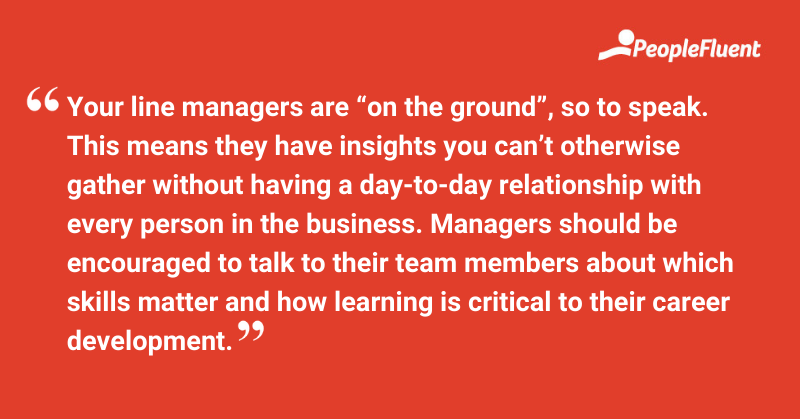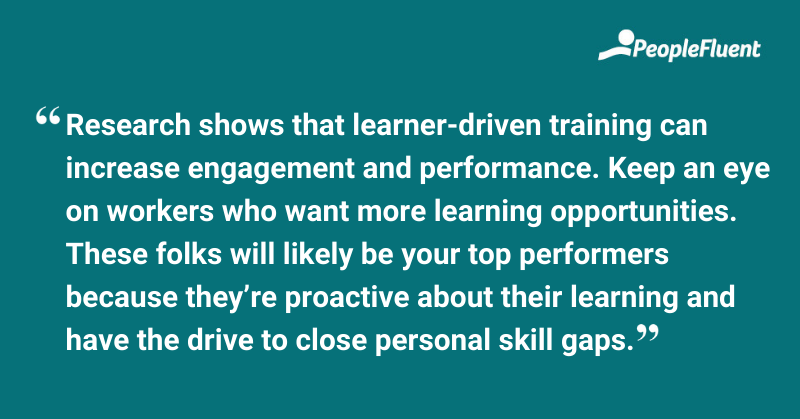Published: Nov 30, 2021Time to read: 4mins Category: Learning
Think Like Your Learners: How a Personalized Learning Experience Enhances Your L&D Programs
To really understand your learners, you need more than just data. You need to be able to get into your learners’ heads. When you know what their goals and priorities are, you can give them better opportunities to enjoy long and fruitful careers with you.
With many of us permanently working from home now, we’re missing out on the watercooler chats and the happy hours with teams. What else are we missing? Well, the camaraderie and socialization that we get from seeing other people. Of course, we mean face to face, not just through a screen.
So, what impact might this have on your learning programs? And how can your L&D teams make up for the lack of in-person training? To answer these questions, let’s dig into some of the insights from a recent webinar with Ben Eubanks, Chief Research Officer at Lighthouse Research.
Get Inside Your Learners’ Minds
Something we hear a lot in the L&D industry is “meet your learners where they are”. But can any of us actually spell out what that means, exactly? If you’re not certain, here’s a tip: meeting your learners where they are doesn’t just point to a location. It means you need to understand your learners’ individual needs and goals. Better still, you should be able to identify where any skills gaps are—and who in the business will need reskilling and upskilling opportunities in the near (or far) future.
Sure, taking a proactive approach requires capable learning tech. It also means your line managers and L&D teams will need to tailor a learning experience that fits everyone. This approach can make—or break, in the absence of personalization—your training and development programs. If you’re not sure how to get inside the minds of your learners, here are a few handy tips:
- Make sure people have easy access to high-quality, third-party content so they can control when, how, and why they’re engaging with learning programs.
- Dig into the data to see how (and what) learners are engaging with. For instance, are remote workers more likely to engage with microlearning?
- Be collaborative with your L&D teams so they can use learning to help achieve your company’s business needs.
Finally, encourage your people to have regular open conversations with their managers. Your line managers are “on the ground”, so to speak. This means they have insights you can’t otherwise gather without having a day-to-day relationship with every person in the business. Managers should be encouraged to talk to their team members about which skills matter and how learning is critical to their career development. But in reality, research shows that less than half of learners get regular feedback from their managers.

ALSO READ | ‘3 Ways Learning Technology Can Help You Overcome Skills Gaps’
Higher Learner Engagement Leads to Better Performance
If you’re a learning professional, we don’t need to tell you about the ever-present push to increase retention and employee engagement through L&D programs. This goal is key to driving a successful workforce. However, building learner engagement has always been a hard-fought battle. Perhaps you’re short-staffed and people don’t have time to stop their work to focus on learning. This is where a talent mobility solution, when integrated with your learning solutions, can help.
A talent mobility solution can provide you and your learners with more insight into what skills they need to be developing. It can link up with your learning ecosystem to offer up curated just-in-time learning opportunities. For example, if Susan wants to reskill herself to take on a lateral role in the same team, there’s learning for that. A talent mobility solution will identify that role, the skills needed to be successful, and the learning that’s needed to make the move.
Learning technology is an investment that can help you get better performance across the business. Giving people the tools they need to enhance their skillsets empowers them to take control of their careers. Plus, research shows that learner-driven training can increase engagement and performance. Keep an eye on workers who want more learning opportunities. These folks will likely be your top performers because they’re proactive about their learning and have the drive to close personal skill gaps.

KEEP READING | ‘Authoring Tools: Enhancing Your Learning Technology Ecosystem’
Give Your Employees the Tools They Need to Succeed
Ready to take your learning program to the next level and help your people do the same for their career growth? See how PeopleFluent can help you reskill, upskill, and drive better performance overall. Get in touch with sales or watch a recording of our latest webinar, ‘Reskilling and Talent Mobility: 3 Key Ideas for Greater Learning Outcomes’.